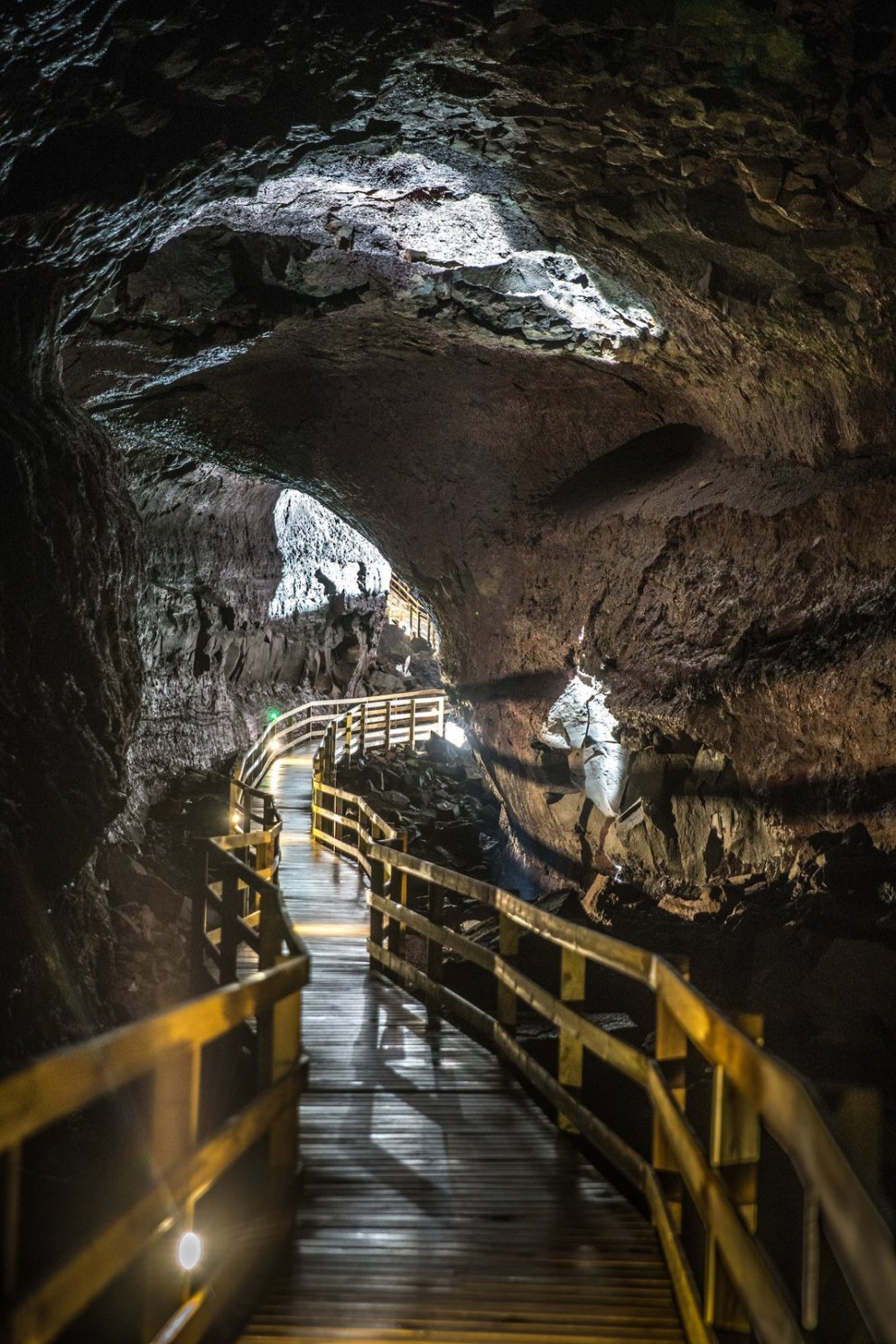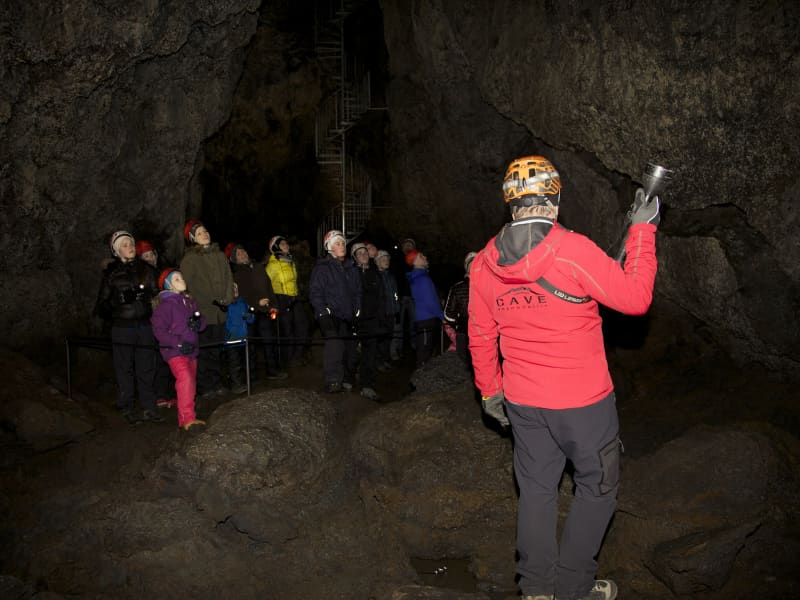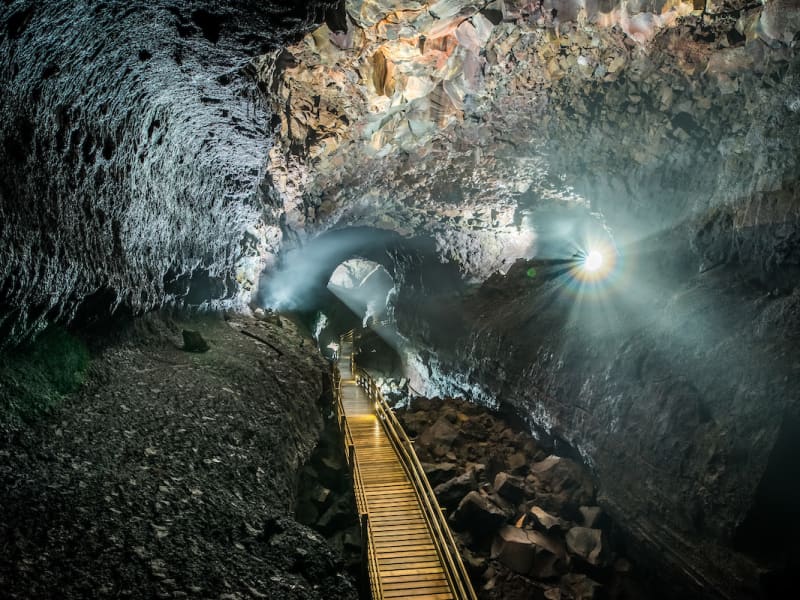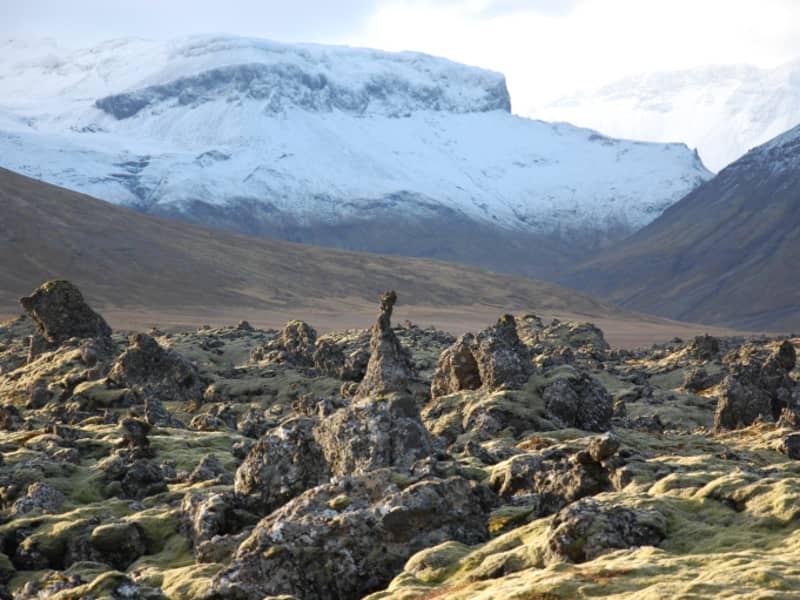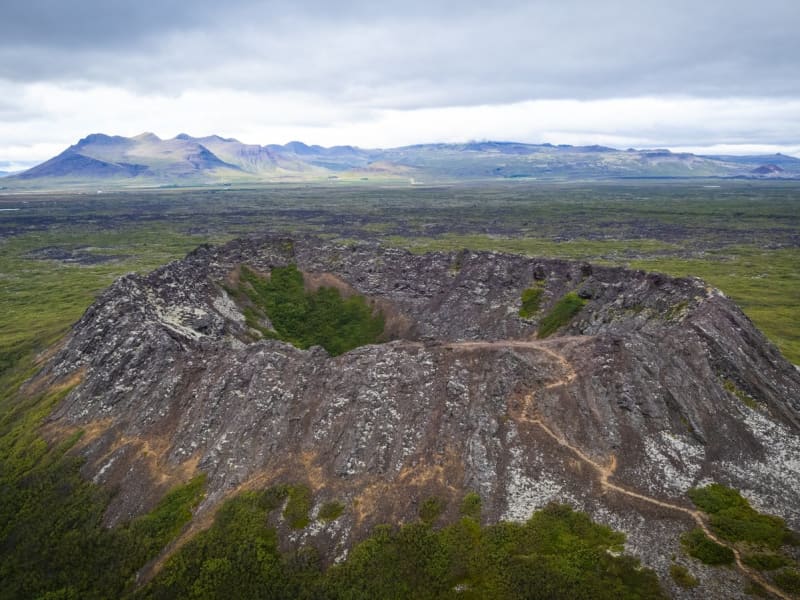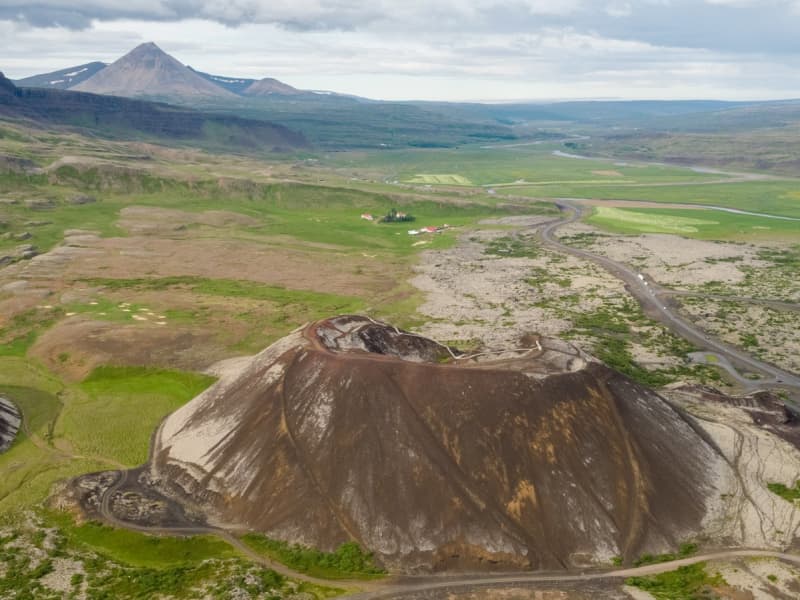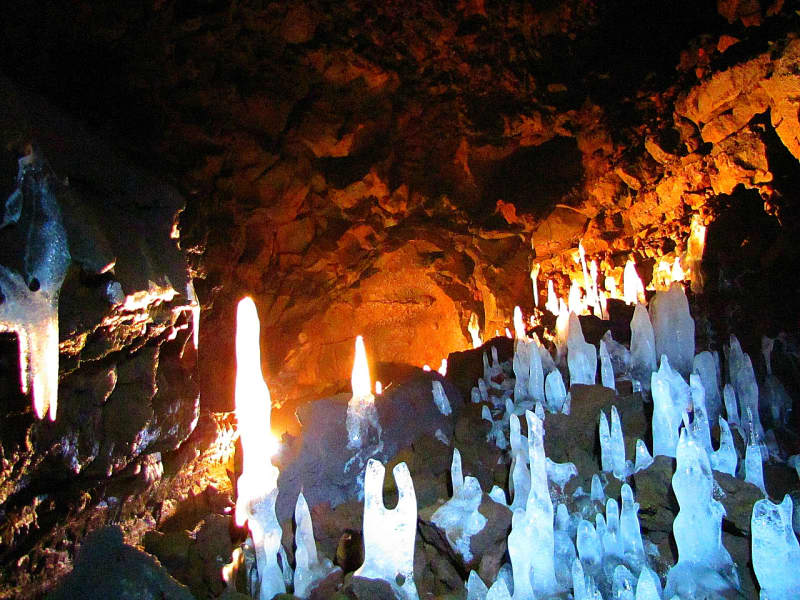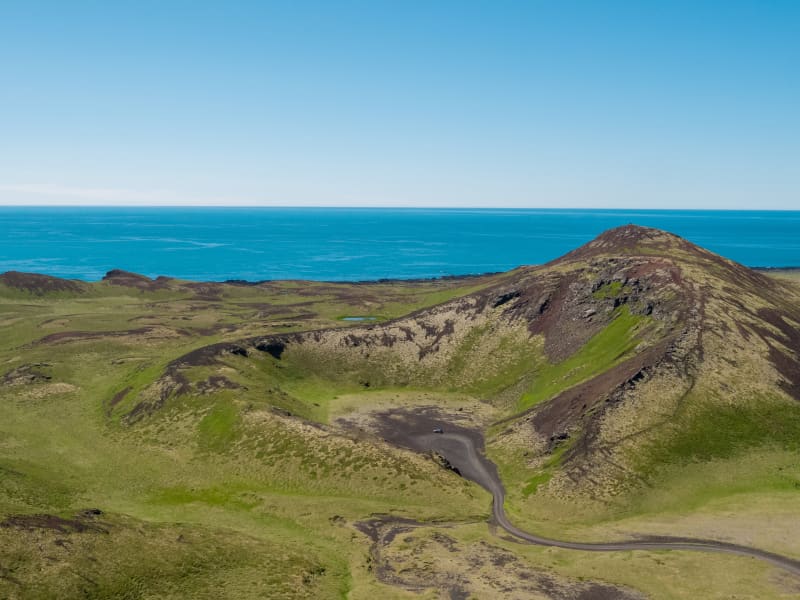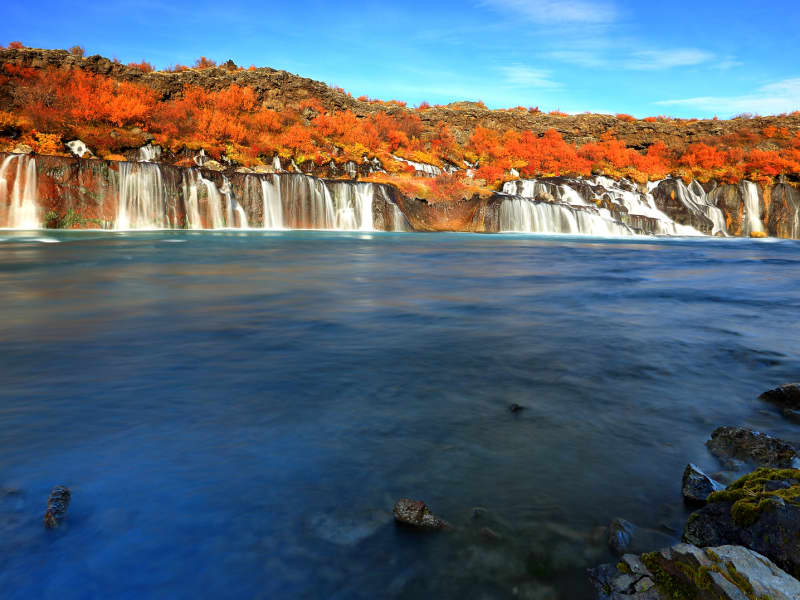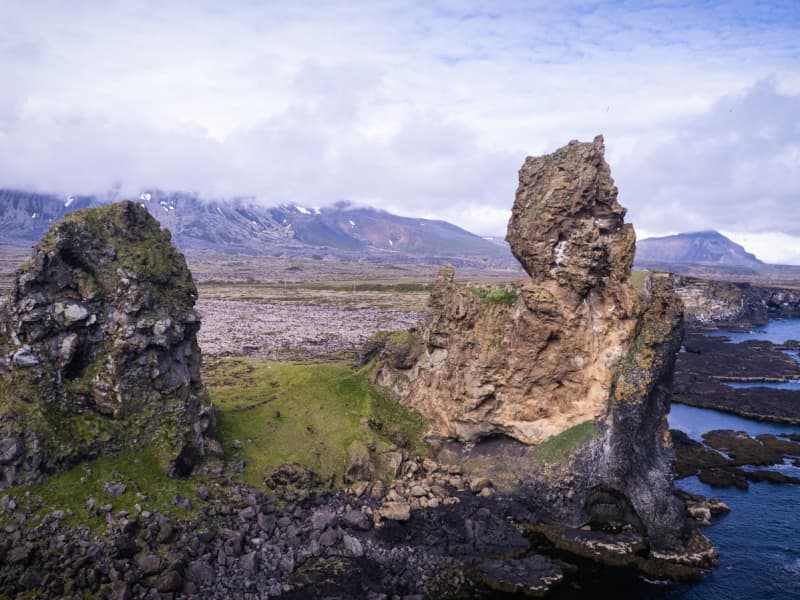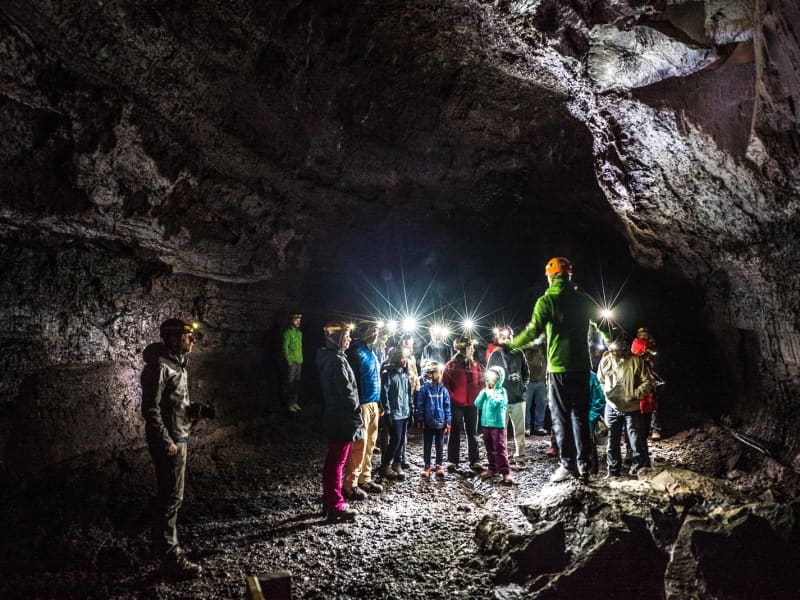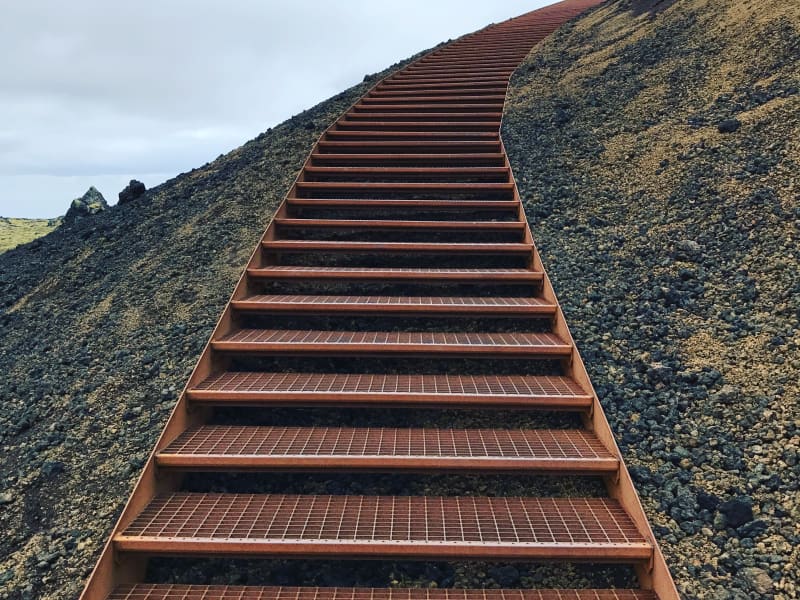A large part of West Iceland is covered in Lava from numerous Craters and Volcanoes. Some of the Craters are accessible by foot, for example Saxhóll Crater which is one of the most popular craters on the Snaefellsnes Peninsula and a fantastic hike, not so strenuous and fits most fitness levels. Grábrók Crater can be ascended by a marked trail from the Ring road and offers beautiful view from the top over Borgarfjordur and the beautiful lake Hredavatn. The beautifully-formed Eldborg is the largest craters along a short volcanic rift and it‘s easiest to approach the Crater from the farm Snorrastadir on its southern side, walking 2,5 km through a shrub-covered lava field. Another option is to experience the lava fields from beneath by exploring two of Iceland‘s unique lava caves, The Cave Vidgelmir which is the largest of all lava caves in Iceland and Vatnshellir Cave which is one of the most easily accessible lava caves in Iceland.
